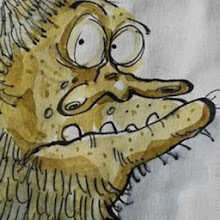Some stuff that may help you in your moment of need during the local pub quiz or as a contestant on 'Who wants to be a millionaire'...Not sure if they are all true, I'll let you decide :)
The popular Christmas carol Silent Night was written by an Austrian priest named Joseph Mohr in 1818 as a result of a broken church organ.
Austria issued the first Christmas stamp in 1937.
Until the Turkey, a Goose was the most popular fare served at a Christmas meal.
Christmas decorations normally appear in the UK shops just after Easter
Pope Julius I declared Christ’s birthday as December 25th sometime during the 4th century.
The tradition of hanging stockings over the fireplace derived from Dutch children placing their shoes next to the fireplace on Christmas Eve.
Charlie Chaplin died on Christmas day.
Mistletoe myth states should a woman appearing under the mistletoe not receive a kiss then she must make haste and contact her local plastic surgeon.
Issac Newton and Humphrey Bogart were both born on Christmas day (not at the same time and to different mothers)
Bing Crosby’s Christmas classic “White Christmas” is the best-selling Christmas song of all time.
Families never quarrel on Christmas day.
The abbreviation of Christmas to Xmas partially comes from the Greek letter ‘chi’, the first letter of the word ‘Christos’, meaning ‘Christ’.
Poet Clark Moore is credited with naming Santa’s reindeer; Blitzen, Comet, Cupid, Dancer, Dasher, Doneder, Prancer, and the most famous reindeer, Rudolph.
James Brown died on Christmas Day.
The colours in Santa Claus’ suit, red and white, were the creation of artist Haddon Sundblom because that was the only tin of paint he had at the time
While working for inventor Thomas Edison, Edward Johnson had lights crafted especially for his Christmas tree leading to the popularization of Christmas tree light.
The UK TV programme X Factor now provide the annual Christmas No.1.
The first Christmas card was designed by John Horsley in 1840 but was not sold until 1843 (shortly after he opened his shop).
Christmas wreaths of holly and berries are believed to represent Christ’s thorns and blood.
In Mexico, the poinsettia plant is called “Flower of the Holy Night”.
Tinsel became a popular Christmas tree adornment after a mythical spider created sprawling webs from branch to branch. It is believe the Christ Child changed the webs to a silver colour.
The red stripe in the candy cane was intended by the inventor as the blood of Christ
Christmas only comes once year so as to allow ample time to pay off credit card bills.
been a while since anything new popped up here
3 weeks ago


No comments:
Post a Comment